Introduction to Sedum
Imagine a plant so versatile that it finds its home in rock gardens, green roofs, and everything in between. The sedum, often lovingly referred to as “stonecrop,” has grown in popularity faster than a weed in a spring garden! These succulent perennials with their fleshy leaves have become the darlings of horticulturists and hobbyists alike due to their resilience and varied aesthetics.
Why has sedum risen to such prominence among plant lovers? Well, for starters, they’re an absolute cinch to care for. A favorite amongst those who desire greenery without the fuss, sedums thrive in conditions that would shrivel lesser plants. They’re the James Bonds of the plant world—cool, collected, and always ready for action. From sun-baked soils to drought-prone terrains, sedums have garnered a reputation for being the ultimate low-maintenance companion for gardeners who prefer to enjoy beauty without the toil.
The importance of proper identification of sedum varieties cannot be overstated. With over 400 species, each with its own unique characteristics and care requirements, knowing your Sedum telephium from your Sedum reflexum is crucial. The variations can be vast, and while most share common care aspects, the devil is in the details. Misidentification can lead to a mismatch in care— and no one wants to see their verdant buddy turn into a withered stick.
An example that leaps to mind is the enchanting ‘Autumn Joy’ sedum, which transforms from a humble green mound into a striking display of autumnal hues as the season progresses. Such magic can only be reliably reproduced year after year by knowing exactly what’s growing in your garden patch.
As gardeners are becoming savvy to the nuances of sedum identification, more and more are turning a critical eye towards ensuring they’re nurturing the right variety. As enthusiasts venture into the world of caring for sedum plants, they quickly learn the key identifiers: leaf shape, coloration, blooming season, and growth habit. Whether it’s spotting the needle-like leaves of a ‘Blue Spruce’ sedum or identifying the sweet rosettes of the ‘Cape Blanco,’ the puzzle of sedum variety is as thrilling to solve as it is rewarding to grow.
So, whether you’re a green-fingered guru or a budding botanist, recognizing and getting acquainted with your sedum is the first step on a rewarding journey. Each species, a story to tell; each plant, a mystery to unravel. Go on, take a closer look, and you might just discover the sedum that perfectly matches your garden narrative.
What Is Sedum?
If you’re plunging into the world of succulents, sedum is a term you’ll hear quite a bit. These hardy, drought-tolerant plants are like superheroes of the garden — they’re not fussy about soil, they scoff at drought, and they laugh in the face of neglect. In fact, you might’ve seen sedum plants holding fort on rocky ledges or even sprouting from the sides of abandoned buildings! Let’s dive into what makes these resilient plants special.

Known as ‘stonecrops,’ sedum belongs to the Crassulaceae family and encompasses a wide range of forms and colors. From tight groundcovers to elegant mounds and even hanging varieties, sedum species showcase a rich tapestry of hues — from emerald greens to fiery reds. Throw in the added bonus of star-shaped flowers, and you’ve got yourself a spectacle.
Botanically, sedum species share several traits: fleshy leaves, a preference for sunny spots, and a remarkable ability to store water to see them through the dry spells. Picture this: you’re walking through a sun-drenched meadow, gazing down at your footsteps, and discover sedum plants happily basking with their glossy leaves and blooms like little stars planted in the earth. This sight is quite typical because sedums are aficionados at making the most of challenging environments, often cropping up in areas most plants wouldn’t dare to venture.
For those with a knack for forgetting to water their green friends, sedum is a dream come true. They thrive on a bit of tough love — meaning the less you coddle them, the happier they are likely to be. It’s as if these plants took the saying “What doesn’t kill you makes you stronger” to heart!
Key Characteristics of Sedum Plants
For those with a passion for flora, unravelling the mysteries of the sedum species can be a truly enchanting endeavor. Recognizing the unique aspects of these succulent beauties is not just a horticultural skill, but an art form. So, how do you spot a sedum in the wild or in the urban jungle of a garden center? Let’s dig into their distinctive features that make identification a breeze.
Firstly, the foliage of sedum plants paints a vivid picture with an array of colors that can shift with the seasons, adding an ever-changing backdrop to your garden palette. From the deepest greens to blushing reds, they can transform a mundane landscape into a tapestry of color. Not only does the color allure the eyes, but the shape of the leaves holds secrets to their identity. Succulent and full, these leaves often spiral around the stem, giving sedums their characteristic plumpness and resilience.
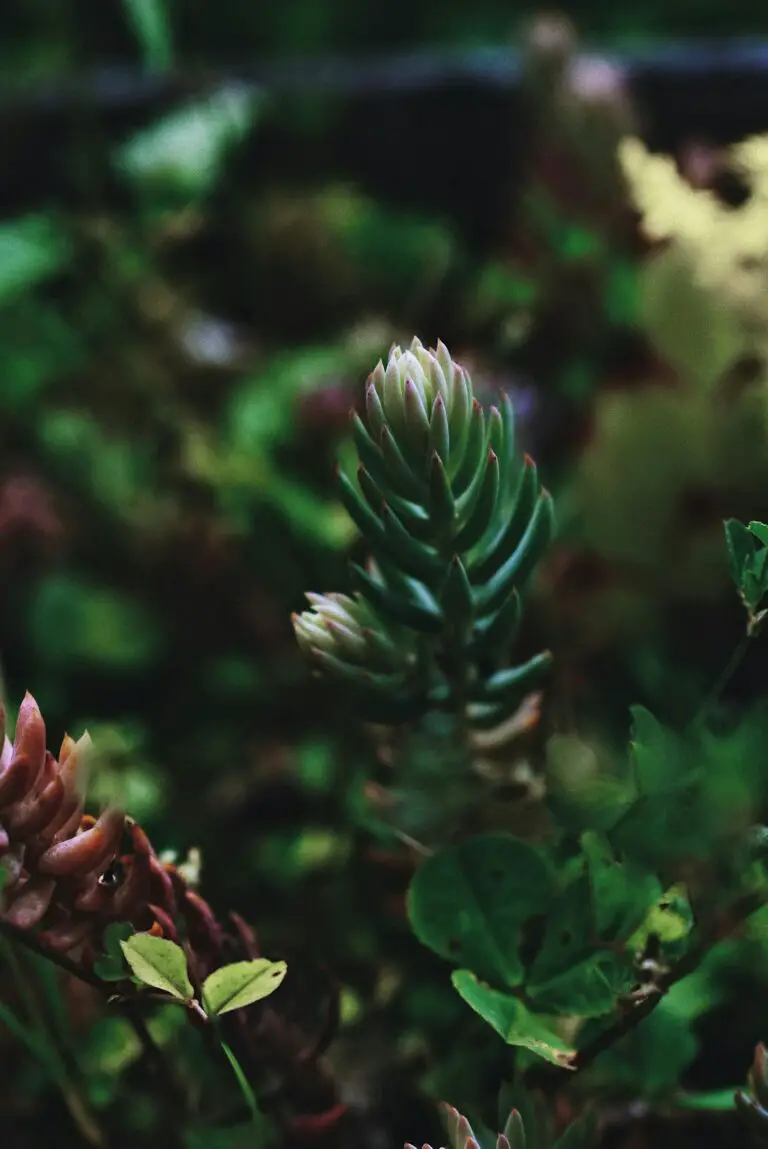
What truly sets sedum apart is their growth habit. You may encounter the ground-hugging varieties that create lush mats underfoot, perfect for that fairy-tale garden effect. Or, you might be captivated by the upright types, which stand tall with clusters of star-shaped blooms that attract a buzz of activity from pollinators.
When you come across a sedum, take a moment to observe its leaves up close. Are they thick and waxy? Do they have a slightly serrated edge or are they smooth to the touch? These tactile cues are all whispers of its variety and heritage. Whether you find them nestled between rocks or proudly perched atop a green roof, understanding these key characteristics can turn an ordinary walk into a botanical treasure hunt.
Growth habits and leaf characteristics are only the beginning. The sedum’s bloom is also a telling feature. Generally blooming in the later summer months, their flowers can range from creamy whites to bold yellows, and even to dusky pinks. It’s this eclectic mix of traits that not only aids in the identification of sedum but also contributes to their charm and appeal among gardeners and nature lovers alike.
Embrace the challenge of identifying these versatile plants and let the key characteristics of sedum become your guide. With leaf in hand and flowers in sight, you’ll soon become a sedum connoisseur, adept at pinpointing these succulent wonders wherever they may grow.
Popular Sedum Varieties
Hey there, plant enthusiasts! Ready to become a sedum sage? Let’s talk about some of the rock stars of the succulent world. These ground-hugging glories not only jazz up your garden beds but are also a cinch to identify once you’re in the know.
First up, meet the ‘Autumn Joy’ — a real party pleaser. This variety stands taller than its kin, with broccoli-like buds that burst into starry pink blooms come late summer. Picture them as the fireworks in your green haven, slowly fading to a rich copper as the seasons change.
Then there’s the ‘Dragon’s Blood’ sedum, which sounds like something out of a fantasy novel, doesn’t it? This daring darling creeps across your garden with leaves that morph from green to a brilliant red with the magic of sunlight and cooler weather. It’s like Mother Nature’s own mood ring!
Dainty yet tough, the ‘Angelina’ sedum struts its stuff with needle-like foliage that is a zesty chartreuse, turning traffic-stopping orange in the fall. It’s perfect for adding a pop of color to rock gardens or spilling over the edge of walls and containers.
These are just a few of the myriad of sedum types out there. Unlock the full potential of these versatile plants in your own green space by exploring our sedum care tips.
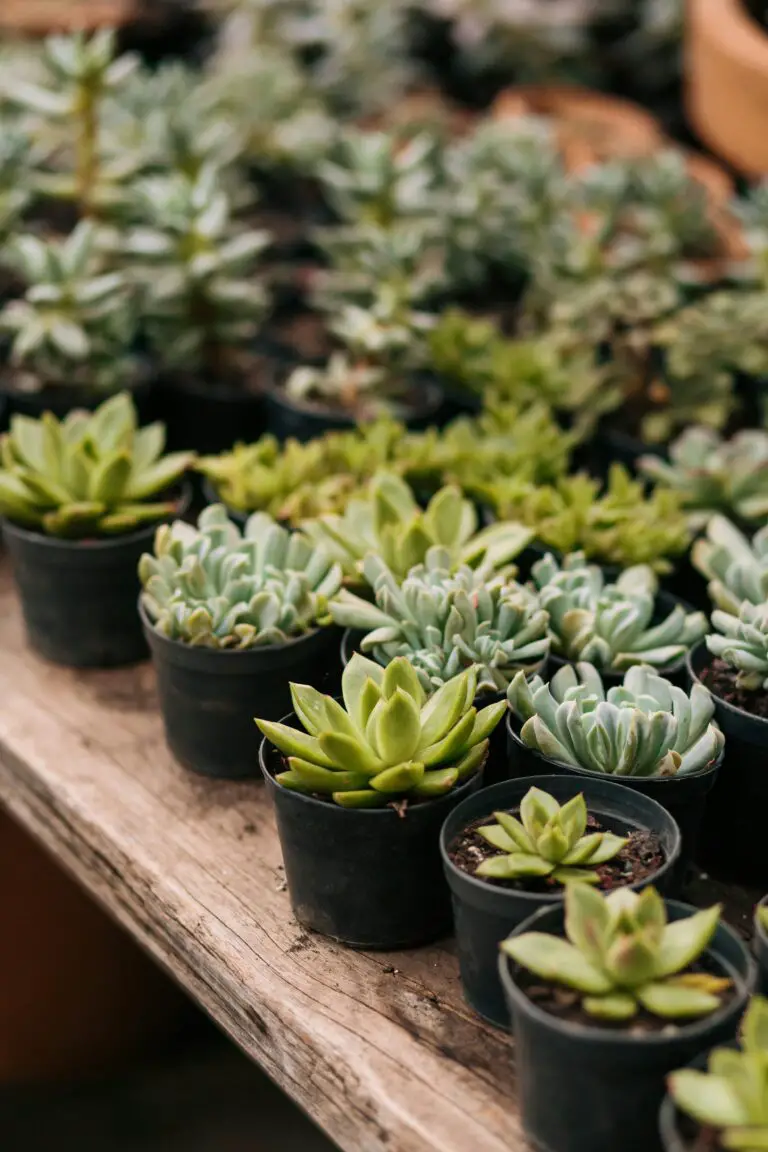
Whether you’re rooting for riotous color or textural diversity, sedum varieties are your go-to guys. So, get out there and mix ‘n’ match — just remember that they love the sun like a cat loves a warm window ledge. And with these tips, you’ll be spotting the succulent splendors in your garden with the eagle eyes of a sedum savant!
The Role of Flowers and Foliage in Identification
Embarking on a quest to identify various species of sedum can be as enthralling as it is enlightening. In the vibrant world of these succulents, there’s a secret language spoken through the hues and forms of their flowers and foliage. To the untrained eye, sedums may just seem like a colorful addition to the garden, but with a keen sense of observation, you can unravel their identities.
Imagine walking through a garden where the sedum reigns supreme. You might encounter enchanting spots perfect for these hardy succulents—which, by the way, can thrive in various conditions, from rocky crevices to sun-soaked beds. Now focus on their flowers. Sedum blooms can dapple a landscape with whites, yellows, pinks, and reds, each shade guiding you to the species’ origins and its evolutionary story. The star-shaped flowers of Sedum spectabile might enchant you with their delicate pink inflorescences, revealing its preference for cooler, temperate climates.
Leaning in closer, the narrative of sedum identification continues with their resilient foliage. Ranging from tight, compact rosettes to sprawled-out leaves, the foliage of sedum plants is as varied as it is telling. The succulent nature of these leaves is a clever adaptation to arid environments, meaning a sedum with plump, water-storing leaves likely hails from a more desert-like habitat. It’s not just about survival; foliage color also changes with seasons and conditions, adding another layer to the sedum’s identity. A ‘Autumn Joy’ sedum might boast an emerald green throughout spring and summer before transitioning to a warm, bronze hue as the cooler months approach.
As we weave through the garden, paying homage to these botanical marvels, you can’t help but stop to appreciate the sedum’s elegant adaptation to its environment, captured so perfectly in its vibrant flowers and robust foliage.
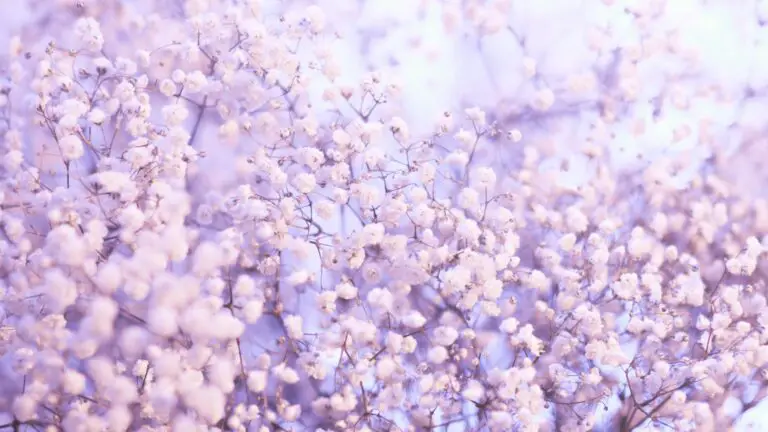
Sedum in Different Seasons
With every season’s turn, sedum plants don a new cloak, challenging the observers who seek to uncover their true identity. In the exuberant spring, new life breathes into the stonecrop family, as fresh buds and bright green hues signal a time of growth and rebirth. Curious to see them at their perkiest? Just take a stroll through your local botanical garden and witness the array of colors as the sedum begins to unfurl from its wintery slumber.
As the balmy breeze of summer whispers through the leaves, sedums are the standout stars in drought-tolerant landscapes. Heat and sunshine are no match for these resilient beauties, which flaunt fleshy leaves and star-shaped flowers. Their remarkable ability to retain water makes them an ideal choice for varied garden settings, offering a burst of color and texture amidst the heat.
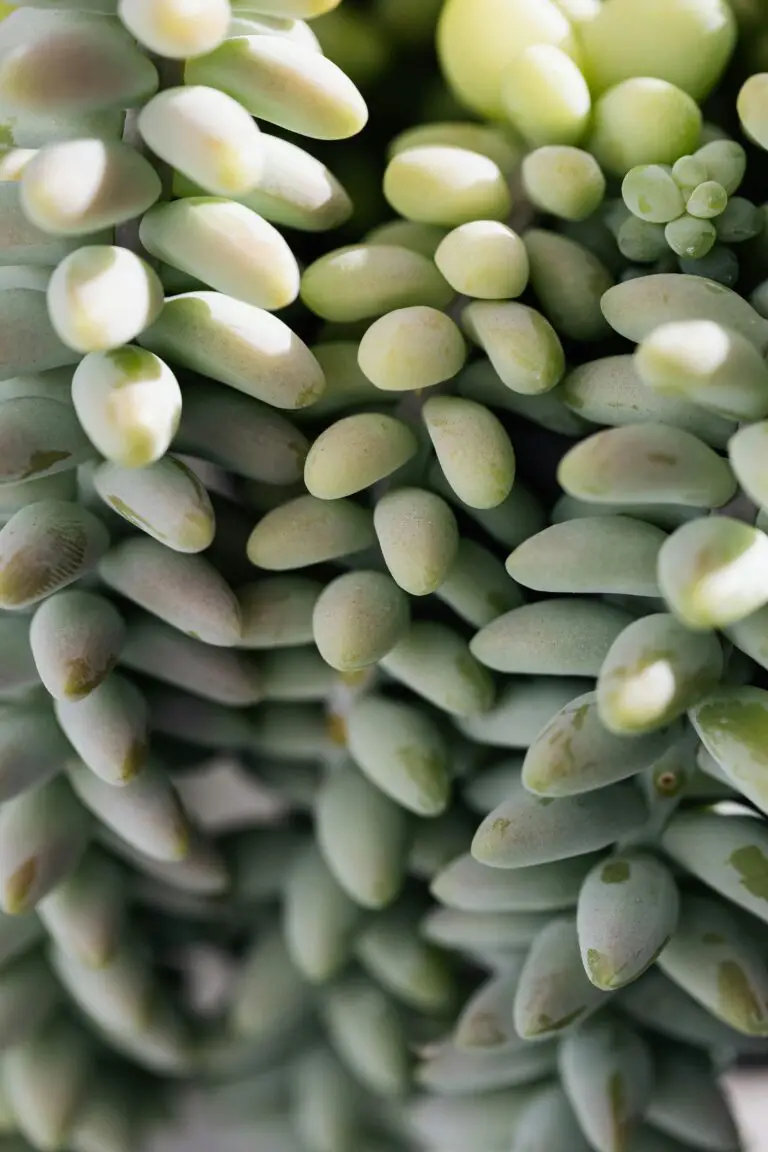
Autumn brings a majestic palette change, with sedum taking on warmer tones. As the temperature dips, the leaves may darken to rich purples and bronzes, a regal transformation to behold. In their transition lies a spectacular display, akin to the grandest sunset, albeit on a canvas of succulent leaves. Oftentimes, sedum’s late-season blooms can even serve as a yard’s crowning glory, drawing pollinators and admirers alike.
Come winter, sedum plants exhibit an extraordinary endurance, with many varieties proudly displaying their verdant or variegated leaves against the frosty backdrop. Despite the chill, these stonecrops stand defiant, their domed clusters of spent blooms offering a stark reminder of nature’s persistence. They may keep a low profile, nestling close to the frost-covered earth, yet their presence is undeniably steadfast.
In every season, sedum tells a story of resilience and beauty. Whether it’s the succulent leaves of summer sedums or the hardy winter varieties, each offers a clue in their identification. The versatility of these plants is unparalleled, with their ability to morph with the changing seasons being a testament to their hardiness. To truly appreciate these changes and identify sedum at each stage, one must become a vigilant observer, patiently noting each nuance brought on by nature’s cycles.
Photo Gallery: Sedum Species
Ever stumbled upon a succulent and wondered if it’s a sedum? You’re not alone! Sedum, commonly known as stonecrop, is a genus of over 400 species with a stunning range of forms, sizes, and colors. Identifying them can be quite the gardening detective work, but it’s also a delightful adventure. Let’s dig into some visual clues that’ll help you pin down your plant’s ID!
Think of sedum identification as a treasure hunt where each clue brings you closer to the prize. You might notice the plump leaves of the Sedum rubrotinctum and its jelly-bean-like appearance that’s oh-so-tactile. Or maybe the star-shaped flowers of Sedum spectabile that look like they’ve been plucked from a midsummer night’s dream.
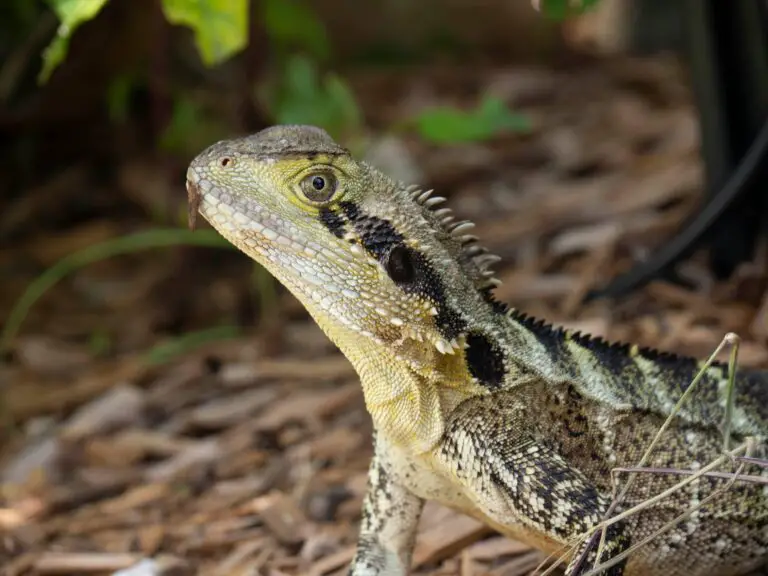
Then there’s the texture extravaganza! Some sedums tote leaves that are fuzzy enough to rival your favorite teddy bear, while others flaunt a waxy sheen like they’re prepping for a photoshoot. Color is another head-turner, with a palette that can range from the deepest burgundies to the brightest lime greens, not forgetting those that blush with rosy pinks under the sun’s playful rays.
Keep your eyes peeled for the unique qualities that differentiate one species from another. The cascading tendrils of Sedum morganianum, known fondly as the burro’s tail, could grace any green haven with its waterfall-like charm. Or the Sedum acre, which creates a lush carpet that turns a vivid gold when it decides it’s time to show off in bloom.
Photo galleries like this one are more than just eye-candy; they’re your visual guidebook. As you browse these living snapshots, look for patterns in the foliage, distinct growth habits, and those surprising bursts of flower power that set each species apart. With a gallery at your fingertips, becoming a sedum savant is just a glance away. Ready to play plant detective?
Caring for Your Sedum
Have you ever stood in awe of a well-kept garden, where the sedum plants stand out with their distinctive shapes and vibrant colors? It’s not just about their rugged beauty; it’s the result of dedicated care that allows these succulents to flourish and remain easily identifiable. So let’s roll up our sleeves and dig into the secrets that will keep your sedum happy, healthy, and unmistakable!
First things first, sedums are sun worshippers, reveling in the glory of full sunlight. Shielding them from their solar deity can lead to a case of mistaken identity – leggy plants with sparse foliage. Ensure they bask in at least six hours of sunlight to maintain their compact, colorful glory. Imagine a tight cluster of green rosettes turning a blushing pink when kissed by the sun – that’s your sedum, proudly proclaiming its name!
Next, these succulent superstars need their beauty rest. That means well-draining soil where wet feet are a thing of nightmares! A mix that’s too water-retentive is like a poorly fitted mask; it hides the true face of your sedum. Whether potted or planted, a gravelly bed is the catwalk where sedum struts its stuff uninhibited, showcasing its thick, fleshy foliage, untarnished by the soggy soils of less attentive caretakers.

Water is a sedum’s occasional friend – think of the friend who drops by unannounced and always overstays their welcome! These resilient plants prefer a thorough soak followed by a period of drought. Overwatering is like an overly talkative friend; it drowns out the plant’s vibrant personality. In contrast, the right watering rhythm allows your sedum to express its individuality, with each leaf plump and glistening, ready for its close-up.
Lastly, the simple act of tidying up can be a performance of care. Overgrown neighbors can encroach on your sedum, blurring the lines of its identity. Keep companion plants in check, and don’t let dead or wilted foliage from last season’s performance linger. A pristine environment emphasizes the sedum’s unique features, from star-shaped flowers to succulent leaves, each trait contributing to the grand botanical ballet.
By following these simple yet effective care tips, your sedum garden will not only thrive but stand out with an unmistakable identity. A healthy sedum is a beacon of botanical beauty, a testament to the attentive care of a devoted gardener. Each well-tended sedum is a signature etched in green, a living sculpture waiting to be admired and unequivocally identified!
Common Mistakes When Identifying Sedum
Ever found yourself admiring a lush sedum plant, only to later discover you were completely off the mark? Identifying sedum can be a deceivingly tricky affair. To ensure you don’t fall into the common pitfalls, let’s pull out our detective kits and comb through the clues that will keep us on the right track.
Overlooking Unique Sedum Characteristics
One classic misstep is skimming over the unique characteristics that set sedums apart. Much like mistaking a zebra for a horse, sedums have distinct traits that differentiate them from other succulents. Each species of sedum boasts its own leaf shape, color, and growth pattern – vital clues waiting to be deciphered. Remember, not all succulents with plump leaves are sedums, so take a moment to note the subtle, yet decisive features.
Confusing Young Plants with Mature Ones
Let’s talk age – not ours, but the sedum’s! Sedums, like fine wine, change as they mature. A juvenile sedum can look vastly different from its full-grown form, leading to a mix-up. For example, the baby version of ‘Sedum rubrotinctum’ might resemble mere green pebbles, while mature plants flaunt red-tipped, jelly bean-shaped leaves. Keep this transformation in mind when playing the name game with these botanical beauties.
Ignoring Seasonal Changes
Seasons change, and so do sedums. What blooms in the summer might be dormant in the winter. This seasonal shift can throw a wrench in our identification process, as flowers and vibrant colors take a temporary bow. Don’t let a sedum in its winter blues misguide you – its true colors will shine through once the seasons turn.
Contending with Hybrid Varieties
Hybrids are the curveballs of the plant world. These genetic mash-ups can inherit a mix of features from their parent plants, producing a sedum that doesn’t fit the typical mold. When faced with a potential hybrid, compare it with known sedum types, but be open to the possibility that you’ve stumbled upon a beautiful botanical blend.
Neglecting Expert Resources
Don’t shy away from consulting the pros. There’s no shame in turning to gardening books, online forums, or local nurseries for wisdom. After all, even the most seasoned gardeners need a second opinion sometimes. And remember – there’s a wealth of knowledge in videos from those who’ve nurtured sedums from seed to splendor.
To wrap it up, identifying sedum is an art that requires a keen eye for detail. Watch out for these common blunders, and you’ll be on your way to becoming a sedum-identifying maestro. Just remember — when in doubt, dig a little deeper, and the truth shall reveal itself, one leaf at a time!
Advanced Sedum Identification Techniques
For those sedum enthusiasts looking to delve deeper into the art of plant identification, some cutting-edge methods offer a lens into the botanical intricacies of these succulent wonders. Imagine being able to pinpoint the exact species of a sedum plant, not just by its visual characteristics, but by its very genetic blueprint. Genetic testing has emerged as a groundbreaking method for those seeking precision in their sedum identification journey.
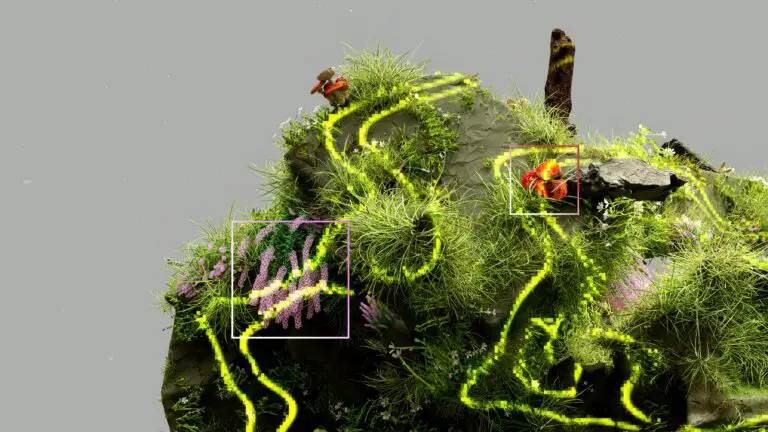
Let’s journey into a scenario where science meets gardening: you’ve come across a sedum variety that’s unlike any you’ve seen before. It’s got the fleshy leaves of a ‘Sedum Spurium,’ but the clustered blooms of a ‘Sedum Reflexum.’ Rather than guessing, you utilize genetic testing to uncover its true identity. DNA analysis can highlight the unique genetic markers that separate one sedum from another, giving you a definitive answer and perhaps even revealing a hybrid that’s a first of its kind.
Not everyone has access to a laboratory or the means to conduct DNA analysis. But do not fret—consulting with plant specialists is another excellent avenue for enhancing your sedum savvy. These botanical experts bring to the table years of experience and knowledge that few books or websites can match. By seeking their guidance, you can learn the subtle differences in leaf texture, stem growth, and bloom patterns that are tell-tale signs of specific sedum species.
Picture this: you’re visiting a renowned botanical garden, and you spot an intriguing sedum with delicate rosettes that you can’t quite identify. Upon consulting with the on-site plant specialist, not only do you discover that it’s a rare ‘Sedum Treleasei,’ but you also gain insights into its native habitat and peculiar care requirements. This enriching interaction adds a deeper layer to your understanding and appreciation of the diverse sedum family.
Whether you’re employing state-of-the-art genetic testing or tapping into the wisdom of seasoned plant specialists, advanced identification techniques are your gateway to mastering the world of sedums. As you continue to explore and uncover the secrets of these succulent treasures, you’ll find that each method brings you closer to becoming a sedum connoisseur.
Frequently Asked Questions
Embarking on the quest to identify the diverse sedum species can be as thrilling as it is educational. So let’s dive into the verdant world of sedums and tackle your most pressing queries!
What Are the Hallmarks of Sedum Identification?
Imagine you’re on a hike and stumble upon a succulent with fleshy leaves—chances are, you’re eyeing a sedum. Known for their chunky leaves that store water, sedums often boast vibrant flowers that bees and butterflies can’t resist. Take a peek at the leaves, the growth pattern, and blooming colors, these are your first clues in unveiling the sedum’s identity.
How Can I Differentiate Between Sedum Varieties?
Think of it as a detective game where each variety has its own set of fingerprints—leaf shape, color, and size can vary drastically from one sedum to the other. Sedum ‘Autumn Joy’, for instance, will proudly show off broad, spoon-shaped leaves, while Sedum reflexum presents a sprawl of needle-like foliage. It’s all about observing these subtle differences.
What Should I Know About Sedum Care?
Here’s a fun fact: sedums are big fans of tough love! They thrive in less-than-ideal soil and don’t need much water, making them perfect for the forgetful gardener. Just ensure they get enough sunlight—like sunbathers, they love catching rays!
For a visual guide and more tips, here’s a video on sedum varieties:
Can Sedums Survive in Cold Climates?
Picture this: even in the chilly embrace of winter, some sedums remain unbothered. Varieties like Sedum spectabile and Sedum spurium are known for their winter resilience. Just give them a well-draining spot, and watch their tenacity shine through frosty mornings!
Is Propagation Easy for Sedums?
Propagation is a cinch with sedums. Snip off a stem or pluck a leaf, let it callous over, and then nestle it into the soil—it’s like giving life to a whole new plant! With patience and a gentle touch, you’ll have a burgeoning sedum sanctuary in no time.
Whether you’re a green-thumbed virtuoso or a budding plant enthusiast, understanding sedum identification and care is a satisfying journey. Keep these FAQ responses in your back pocket, and you’ll be deciphering the sedum secrets like a seasoned botanist!


